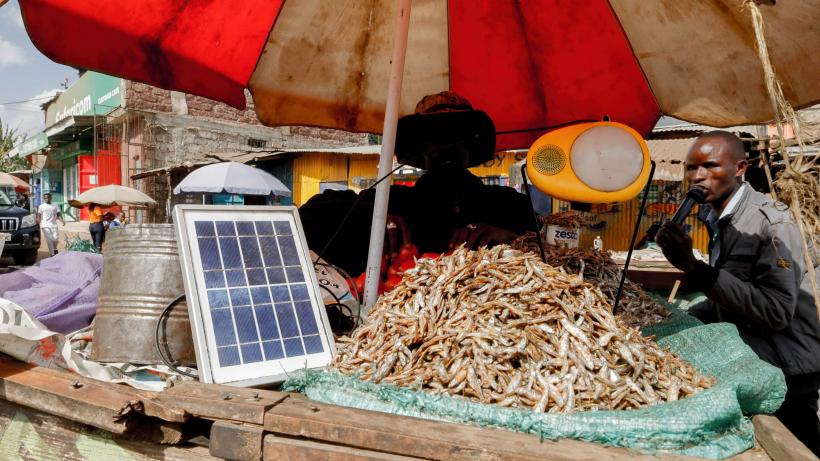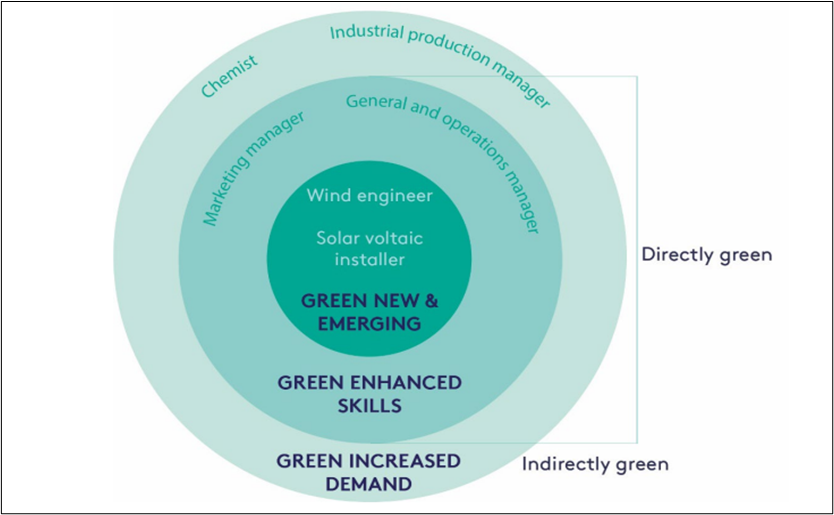
Front-lining green jobs in the sustainable urbanisation agenda
The global transition to a carbon-neutral economy is expected to create many opportunities in the labour market, often referred to as ‘green’ jobs. In developing countries, active public policy at the national and local levels are needed for reskilling and upskilling workers into greener, higher-productivity occupations. This requires a better understanding of what green jobs are and how to quantify them.
Decarbonising the economy and tackling climate change is a pro-growth strategy in the long term. Beyond avoiding the devastating effects on the environment and quality of life, which could cost the world at least 5% of GDP per year, the global transition to a carbon-neutral economy offers many growth opportunities. These include the creation of new markets and associated value chains to serve the growing international demand for low-carbon goods and services. The invention and diffusion of cleaner technologies across the economy also provide opportunities for productivity improvements and greater resource efficiency.
For developing countries to reap the benefits of sustainable growth, cities must be on the frontline of climate action. This is particularly important for poorer countries in sub-Saharan Africa and South Asia, which are urbanising at extremely rapid rates and will need to accommodate higher demand for services and employment in cities. At the 11th session of the World Urban Forum focusing on “transforming our cities for a better urban future”, many events stressed the need for sustainability and resilience to be embedded in all areas of urban policy. From low-emitting construction materials to environmentally friendly urban planning, panels and training events presented readily available solutions that can be quickly deployed by local governments and the private sector.
Only a few events, however, explicitly discussed jobs – more specifically, green jobs – and the associated skills and labour market policies that are needed to support job creation in a climate-resilient and more productive economy. Rather than signalling the importance of green jobs for sustainable urban development, their relative underrepresentation at the World Urban Forum may have in fact reflected a lack of clarity on what constitutes a green job, especially in developing country cities.
What are green jobs?
With no singular or universally accepted definition for green jobs, it is rather challenging to quantify them. Furthermore, definitions are often too vague to encourage policy action, or too narrowly focused on a few industries or activities like environment protection and resource management. Combined with the data constraints documented in many developing countries, this creates barriers for the roll out of comprehensive programmes aimed at supporting much needed job creation and training of the workforce. It also means that public policy and investments are often poorly directed, and the green jobs agenda is consequently side-lined.
In simple terms, a green job can be defined as one that is aligned with or supportive of the low-carbon objective. For this reason, green jobs can be found in many sectors of the economy, both emerging and existing ones, as workers adapt to lower-emitting technologies and more sustainable practices. Restricting green jobs to employment in a small set of industries that are directly relevant to decarbonisation or that contribute the least to greenhouse gas emission may underestimate the potential of job creation.
For example, a narrow sectoral approach excludes important jobs that are key to delivering the transition, including those in education, consulting, and government. This ‘top-down’ methodology also creates further measurement issues as the same job may be considered green or ‘brown/dirty’ depending on the industry it is situated in. Even within industries, there is high variation in carbon footprints and sustainability practices of individual firms. More granular measurement approaches are therefore needed to enable estimations of green job creation that complement the industry-level ones.
Understanding the ‘greenness’ potential of jobs
An alternative exercise is assessing the ‘greenness’ potential of occupations based on their skill requirements or task content. This allows for a more nuanced and dynamic analysis of the labour market, directing attention to sustainable growth opportunities that stem from ‘greening’ occupations. For example, a recent study in the UK mapped both direct and indirect green jobs, which currently account for approximately 20% of employment according to conservative estimates. For descriptive and measurement purposes, these occupations were grouped into three main categories (shown in the figure below).

Note: The study is based on an occupation-level classification developed by O*NET in the United States. It applies a relatively broad definition of green jobs across twelve sectors of the economy.
In the directly green group, represented by the two darker shades:
- New and emerging occupations are those that are being created as a result of cleaner technologies and processes and are either entirely novel or derived from an existing activity. Examples are recycling coordinators, biomass plant technicians, air-quality control specialists, and environmental economists.
- Enhanced skills occupations are those that will be significantly altered to be compatible with low-carbon objectives. These include agriculture workers – who will need to learn new farming and land management techniques, construction workers – who will need to adapt to more sustainable building materials, and machinists – who will need to train on operating new machinery.
Finally, the outer circle represents the indirectly green group which are occupations that will not be significantly altered but are expected to increase in demand. These include bus drivers, railroad conductors, electricians, forest conservation workers, health and safety specialists, and wildlife biologists.
Embracing change to reap sustainable growth opportunities
Many of the job families described constitute a tiny fraction of employment in developing-country cities, which is predominantly informal and survival-based. However, this incipient literature using occupation-level analysis highlights the importance of programmes aimed at reskilling and upskilling the workforce. As governments increase their commitments to pursuing sustainable growth paths, policymakers will need to ensure equitable access to the new labour market opportunities that will be created. This requires an assessment of the gap between the current skill set of different worker categories to that which will be required in the jobs of the future. Understanding this ‘ease of transition’ is especially important for low-skilled workers who are likely to be displaced due to increasingly tighter environmental regulations.
Developing countries are undergoing continuous structural transformation, with old patterns of economic growth doing a worse job at explaining the development trajectories of today. This is particularly true when it comes to employment growth. Economic change is being amplified by climate deterioration which is already affecting the pace of reallocation of workers across and within urban labour markets. A successful economic strategy towards sustainable urbanisation needs to be forward-looking and flexible enough to embrace change, identifying new opportunities to be seized and challenges to be overcome.
Forthcoming IGC work seeks to unpack some of these opportunities and challenges. In particular, it will seek to contextualise the green jobs agenda in developing-country cities, discussing some of the trade-offs and policy recommendations aimed at providing decent employment for the poor while balancing the immediate systemic needs of a changing climate.
Editor's note: If you are interested in the topic of green jobs and sustainable urbanisation, join our upcoming webinar Addressing the sustainable urbanisation challenge in developing countries, part of LSE Environment Week.

